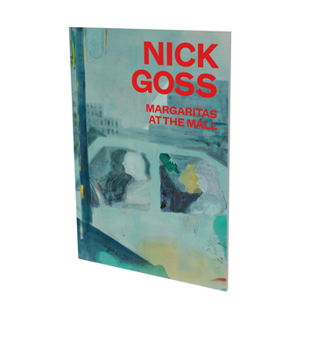Nick Goss: Margaritas at the Mall: Cat. Cfa Contemporary Fine Arts Berlin
In his new paintings Nick Goss seems to aim at the modus of memory; how at any given time it necessarily contains more than one place, more than one logic. On the other hand it's easy to read Goss's works within the logic of the modernist collage, or the cubist compulsion for cutting up. In his canvas "Last of England," a throng of people are trapped in Weimaresque fashion as if inside a shattered mirror--a bag, a scarf, something carried under an arm, all pieces on the same flat plane. But spend more time with them and the effect is not, as in Ho¨ch's surreal assemblages or Kirchner's brash streetscapes, one of alienation, or disorientation. I see the people in Goss's new paintings rather, in Burial's words, as strangers silently believed in, invested with grace. Fragmentation in these works, then, might better be understood, like in music, as a kind of sampling. There's humour in the detachment, as there is, in Goss's paintings, always something more to what we see, however flat or rotten or wasted it may seem. It was fun at the bowling alley until it wasn't anymore... Right?
Format:Paperback
Language:English
ISBN:3864423643
ISBN13:9783864423642
Release Date:May 2022
Publisher:Snoeck Publishing Company
Length:24 Pages
Customer Reviews
0 rating





